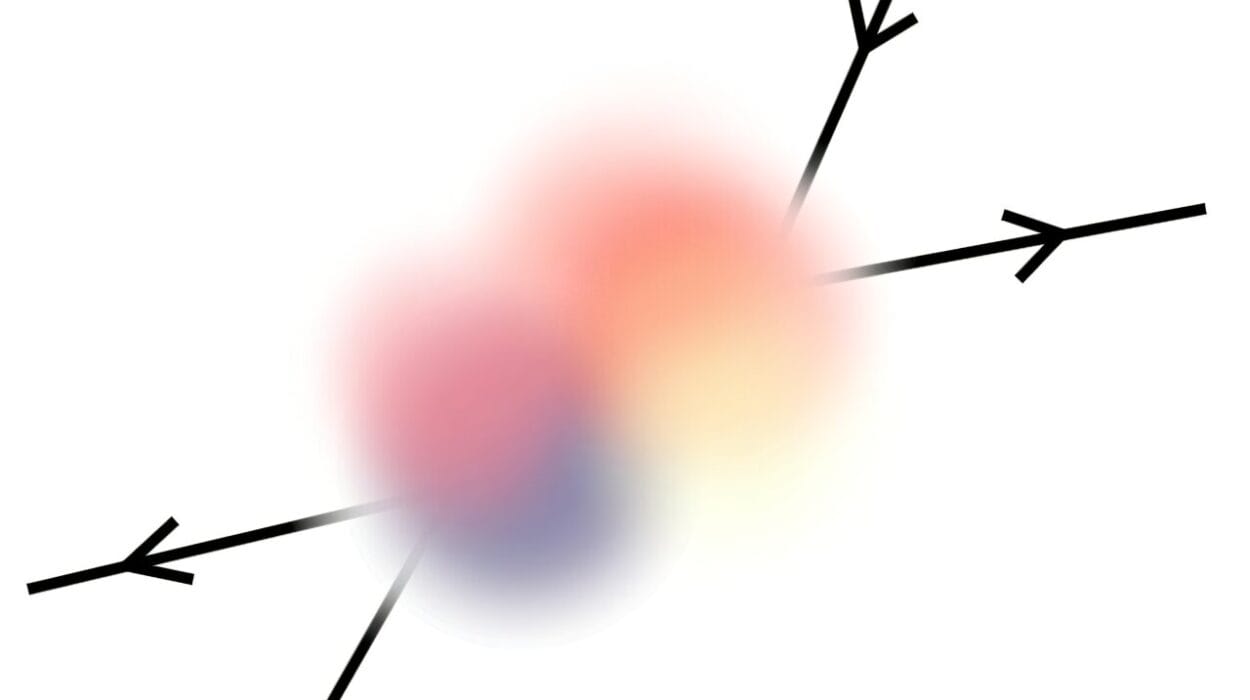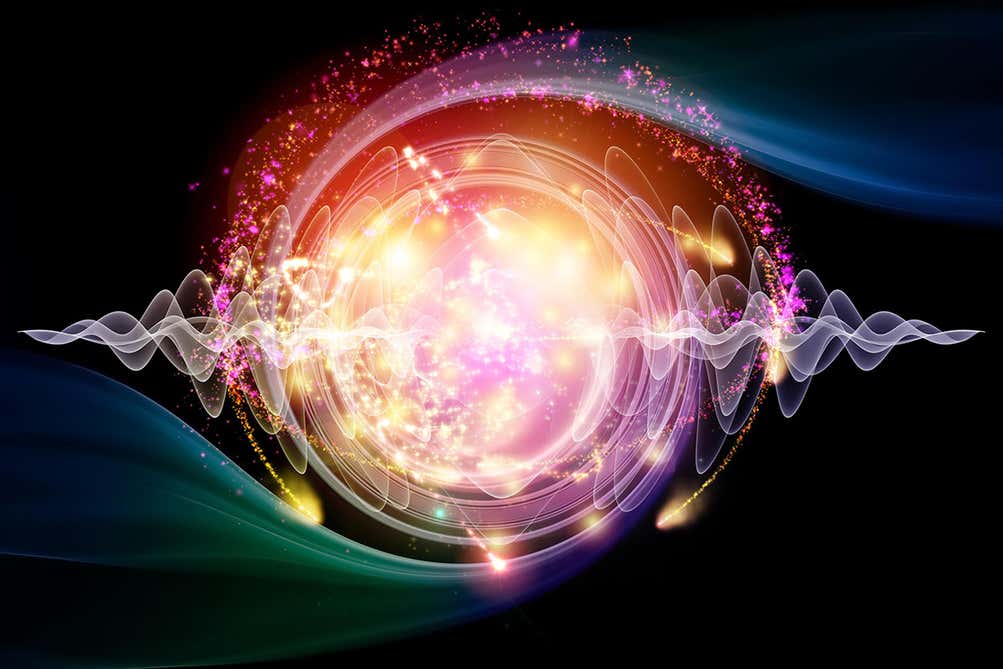At first glance, the world appears beautifully local. A falling apple obeys gravity. Light ripples through space at a constant speed. Each event follows neatly from the last, as though reality itself is stitched together by cause and effect. But at its deepest layers, nature defies this comforting logic. The universe, it turns out, is not entirely local—it is bound by something stranger, more profound, and more intimate than proximity.
At the quantum level, particles separated by vast distances can behave as parts of a single whole. They are not independent entities, but facets of a single cosmic wave, vibrating together in ways that seem to mock the limits of space and time. This phenomenon, known as nonlocality, has long been one of the most baffling and beautiful enigmas in physics. It suggests that the universe is not merely a collection of separate things, but an inseparable web where every thread knows the tremors of the others.
Now, a remarkable theoretical advance from two Polish physicists has cast new light on this mystery. They have shown that nonlocality is not a rare quantum trick, confined to exotic laboratory setups—it is a fundamental property of matter itself. According to their findings, all particles of the same type—be they electrons, photons, or protons—are inherently entangled with one another, across the cosmos. Every photon that has ever existed, from the glow of distant quasars to the light entering your eye at this very moment, shares an invisible connection with every other photon in existence.
The Mystery of Indistinguishability
To understand this breathtaking idea, we must first grasp a simple yet profound principle of quantum mechanics: particles of the same type are identical in every way. There is no such thing as “this particular electron” or “that particular photon.” Each is an exact copy of every other, indistinguishable not just in practice, but in principle.
In our everyday world, individuality feels obvious. Every grain of sand, every snowflake, every person is unique. But the quantum world plays by different rules. When we speak of electrons, we are speaking of an ocean of identical beings—each one an echo of the same fundamental pattern of nature.
This indistinguishability is not just a philosophical quirk; it has astonishing physical consequences. It is the reason atoms can form, why stars shine, and why matter behaves as it does. In quantum mechanics, particles of identical type must obey special symmetry rules. Fermions, like electrons, obey the antisymmetry rule—no two can occupy the same state. This is the foundation of the Pauli exclusion principle, which gives rise to the structure of the periodic table and, ultimately, the solidity of matter. Bosons, like photons, obey the opposite rule—they love to share. This is why light waves can merge, and why lasers and superconductors exist.
But beyond these practical implications lies something even more fascinating: the very indistinguishability of particles may be the source of quantum nonlocality itself.
When the Universe Refuses to Stay Local
For centuries, physicists believed that the universe must be local—that no influence can travel faster than light, and that objects separated in space should behave independently. This principle of locality fits neatly with the everyday world, where no action here instantly changes something on the far side of the galaxy.
Yet quantum mechanics tells a more mysterious story. In the 1960s, the physicist John Stewart Bell formalized this tension in a simple but revolutionary thought experiment. He showed that if quantum theory is correct, certain correlations between distant particles cannot be explained by any local mechanism. In other words, reality seems to “know” itself across vast distances, as if it were a single, indivisible entity.
Experiments have since confirmed Bell’s prediction time and again. Entangled particles—like two photons born from the same process—can behave as if they share information instantaneously, no matter how far apart they are. This “spooky action at a distance,” as Einstein famously called it, has been verified in laboratories around the world.
But all these experiments involve specially prepared pairs of particles, meticulously entangled by physicists. What the Polish researchers proposed goes deeper: what if nonlocality doesn’t need to be created at all? What if it’s built into the very essence of the universe?
The Polish Breakthrough: Finding Nonlocality in Identity
Dr. Paweł Błaszak of the Institute of Nuclear Physics of the Polish Academy of Sciences (IFJ PAN) and Dr. Marcin Markiewicz of the Institute of Theoretical and Applied Informatics (IITiS PAN) took on this radical question. Their goal was to determine whether nonlocality could emerge purely from the fact that identical particles are, by definition, indistinguishable.
They approached the problem using the tools of quantum optics—a field that manipulates light and matter with exquisite precision. By studying how identical photons or electrons behave in systems where their paths never even cross, they explored whether the mere identity of particles could give rise to correlations that violate Bell’s inequalities.
Their analysis revealed something astonishing. Nonlocality—this strange, non-classical linkage—can indeed arise from the indistinguishable nature of identical particles. It doesn’t need to be engineered; it simply is. Every identical particle in the universe is connected to every other, not by a physical bridge, but through a shared quantum existence.
Their work further showed that this effect can be detected experimentally using ordinary optical components—mirrors, beam splitters, and detectors—arranged in clever configurations. Even when particles never interact directly, the correlations between their detections can reveal nonlocal behavior.
Entanglement Without Interaction
The idea that particles can be entangled without ever touching each other sounds impossible, even magical. Yet it flows naturally from quantum mechanics. In the quantum world, identity itself is an act of unity. When two identical particles exist, their joint wave function must reflect their indistinguishability—it is either symmetric (for bosons) or antisymmetric (for fermions). This symmetry alone is enough to generate correlations that defy classical explanation.
In practical terms, this means that when two photons travel through an optical setup—each choosing one of several possible paths—quantum interference between their indistinguishable states can create measurable nonlocal effects. These effects are not caused by communication between the particles but arise because the universe cannot tell one photon from the other.
This insight reframes how we think about quantum connections. Entanglement is not a fragile thread linking two special particles. It may be a universal feature of reality, woven into the very identity of matter itself.
The Two Faces of the Quantum World
In classical physics, we label and separate things. Every planet, every atom, every billiard ball follows its own trajectory. But in quantum physics, labels dissolve. Reality becomes a shimmering tapestry of probabilities, and the boundaries between objects blur.
This blurring gives rise to two great classes of behavior: fermionic and bosonic. Fermions, which make up matter, obey the exclusion principle and form the intricate architecture of the material world. Bosons, which mediate forces, can merge and amplify each other, creating the radiant glow of light and the coherence of lasers.
The Polish researchers found that all fermionic states inherently exhibit nonlocal correlations. For bosons, nearly all states do as well—except for a very narrow set that can be mathematically reduced to simpler, single-mode configurations. In other words, nonlocality is not a rare or delicate property—it is a fundamental and pervasive aspect of quantum reality.
A Universe Entangled with Itself
Imagine this for a moment: every electron in your body is subtly connected to every other electron in the cosmos. Every photon in the room around you hums in harmony with the light of distant galaxies. The connections are not ones we can use to send signals or messages—they do not violate relativity or transmit information faster than light—but they reveal that separateness is, at a deep level, an illusion.
What appears as distance in our everyday perception may, in the language of physics, be nothing more than a projection of a deeper unity. Space, in this sense, is not a barrier but a stage upon which the interconnectedness of all things unfolds.
This idea resonates with a profound insight from 20th-century physics. In their monumental 1973 work Gravitation, Charles Misner, John Wheeler, and Kip Thorne wrote: “No acceptable explanation for the miraculous identity of particles of the same type has ever been put forward. That identity must be regarded, not as a triviality, but as a central mystery of physics.” Half a century later, this mystery continues to deepen, inviting us to reconsider what individuality and connection truly mean in a quantum universe.
The Meaning of Nonlocality
Nonlocality does not imply faster-than-light communication or telepathy across space. Rather, it tells us that the fabric of reality is woven differently than our classical intuitions suggest. What we perceive as “separate” objects are often merely different expressions of one unified quantum state.
In this sense, the universe behaves more like a symphony than a machine. Every particle plays its part, yet no note exists in isolation. The melody of existence emerges only from the harmony of the whole.
This understanding also carries deep philosophical implications. If matter itself is bound by nonlocal ties, perhaps consciousness and life—emergent phenomena of matter—are also part of this universal coherence. Though physics does not yet touch such questions directly, the thought lingers: perhaps the unity we sense in nature and in ourselves is not illusion, but reflection.
The Future of Quantum Exploration
The work of Dr. Błaszak and Dr. Markiewicz opens new directions for both theoretical and experimental research. It suggests that we can probe the fundamental unity of matter not by creating complex entangled systems, but by studying the quantum fingerprints left by indistinguishability itself.
Their theoretical framework provides a practical roadmap for future experiments—experiments that could be carried out using existing optical technologies. If confirmed, these findings would not only deepen our understanding of quantum mechanics but could also inspire new approaches to quantum communication, computing, and sensing—fields where entanglement is the ultimate resource.
Yet perhaps the most profound consequence is not technological, but existential. If nonlocality is woven into the identity of every particle, then the universe is not merely a collection of parts—it is a single, unfolding whole.
The Eternal Question
Physics, at its heart, is not just about equations or predictions; it is about curiosity and wonder. Each discovery, no matter how abstract, reshapes our understanding of who we are and where we stand in the cosmos.
Quantum nonlocality, born from the simple truth that identical particles cannot be told apart, whispers of an even deeper order—a harmony that transcends space and time. In a sense, we are not observers of the universe but participants in its grand entanglement. The atoms of our bodies and the light of distant stars are not strangers; they are kin, bound together in the same cosmic dance.
The question now is not whether nonlocality exists—it does—but what it means. What does it tell us about reality, about identity, about the unity that underlies all things?
Perhaps, as these Polish physicists have shown, the answer has been with us all along, hidden in plain sight—in the quiet sameness of every particle, in the silent symmetry that binds the universe together.
More information: Pawel Blasiak et al, Identical particles as a genuine non-local resource, npj Quantum Information (2025). DOI: 10.1038/s41534-025-01086-x






